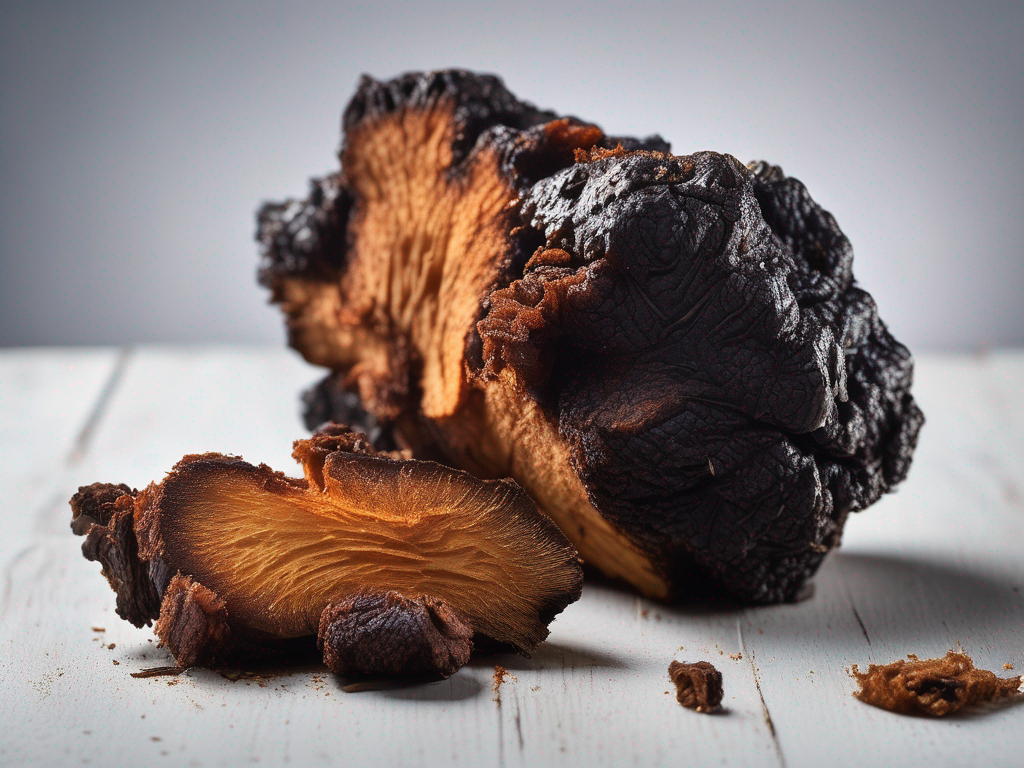
How to Determine if Chaga Mushroom has Gone Bad
Get Your Free Food Safety Cheat Sheet
30 most common foods with instant answers. Print it and stick it on your fridge—completely free!
How to Determine if Chaga Mushroom has Gone Bad
Chaga mushroom, also known as Inonotus obliquus, is a type of fungus that grows on birch trees in cold climates. It has been used for centuries in traditional medicine for its potential health benefits. However, like any food product, chaga mushroom can spoil if not stored properly. In this blog post, we will discuss ways to determine if chaga mushroom has gone bad and how to ensure its safety for consumption. (Chaga mushroom)
Understanding Chaga Mushroom
Before we delve into the signs of spoilage, let's understand what chaga mushroom is and why it is popular. Chaga mushroom is known for its antioxidant properties and potential health benefits, which include immune system support and anti-inflammatory effects. It is commonly consumed as a tea or in powdered form for various health purposes.
Proper Storage of Chaga Mushroom
To maintain the freshness and quality of chaga mushroom, it is essential to store it correctly. Here are some tips to ensure proper storage:
- Store chaga mushroom in a cool, dry place away from direct sunlight.
- Use airtight containers to prevent moisture and air exposure.
- Avoid storing chaga mushroom near strong-smelling foods, as it can absorb odors.
- Check the expiration date on the packaging and consume it before it expires.
Signs of Spoiled Chaga Mushroom
Now, let's discuss the signs that indicate chaga mushroom has gone bad and should not be consumed:
Mold Growth
- Visual Inspection: Check for any visible signs of mold or discoloration on the chaga mushroom. Mold growth indicates spoilage and the presence of harmful microorganisms.
- Texture Changes: Spoiled chaga mushroom may feel slimy or mushy to the touch, indicating decay.
Foul Odor
- Sniff Test: Fresh chaga mushroom has a mild, earthy aroma. If you detect a sour or unpleasant smell, it is a sign that the chaga mushroom has spoiled.
Changes in Color
- Darkening: If the chaga mushroom has significantly darkened in color or developed dark spots, it is likely spoiled.
- Unusual Colors: Any abnormal colors such as green or blue patches indicate spoilage.
Taste Test
- Bitterness: Fresh chaga mushroom has a slightly bitter taste. If it tastes excessively bitter or off, it may have gone bad.
Health Concerns
- Allergic Reactions: Consuming spoiled chaga mushroom can lead to allergic reactions, gastrointestinal issues, or food poisoning. If you experience any adverse effects after consuming chaga mushroom, seek medical attention.
Safety Precautions when Consuming Chaga Mushroom
To ensure your safety when consuming chaga mushroom, follow these precautions:
- Purchase from Reputable Sources: Buy chaga mushroom from trusted suppliers to ensure product quality and safety.
- Consult a Healthcare Professional: If you have underlying health conditions or are pregnant or nursing, consult a healthcare provider before consuming chaga mushroom.
- Moderation: Consume chaga mushroom in moderation to avoid potential side effects.
- Storage Guidelines: Follow proper storage guidelines to maintain the freshness and integrity of chaga mushroom.
Conclusion
In conclusion, determining if chaga mushroom has gone bad involves using your senses to detect any signs of spoilage. Mold growth, foul odors, color changes, and unusual tastes are indicators that the chaga mushroom should not be consumed. By storing chaga mushroom properly and being mindful of safety precautions, you can enjoy its potential health benefits without risking your well-being. Remember to always prioritize food safety and quality when consuming any food product, including chaga mushroom. (Chaga mushroom)
Authoritative Food Safety References
These agencies and university labs inform every tip and health precaution we publish.
USDA FoodKeeper – Cold Storage Guidelines
Official refrigerator, freezer, and pantry timelines maintained by the U.S. Department of Agriculture.
Visit USDA FoodKeeperFDA Produce Safety Rule & Grower Guidance
Field-to-fridge handling practices that prevent contamination of fruits, vegetables, and leafy greens.
Visit FDA Produce SafetyCDC Foodborne Illness Prevention Hub
Surveillance-backed guidance on pathogens, symptoms, and steps to reduce foodborne illness risk.
Visit CDC Food SafetyUC Davis Postharvest Technology Center
University research detailing optimal storage atmospheres for produce after harvest.
Visit UC Davis PostharvestPenn State Extension – Home Food Preservation & Safety
Peer-reviewed extension bulletins on safe canning, chilling, and reheating practices.
Visit Penn State ExtensionGet Your Free Food Safety Cheat Sheet
30 most common foods with instant answers. Print it and stick it on your fridge—completely free! Want more? Upgrade to the complete guide with 70+ foods.
Scan your food directly and get instant safety info using our AI-powered camera feature.